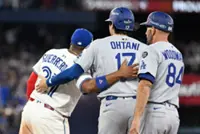Considered one of the best Superman stories ever written, Alan Moore and Dave Gibbons' seminal For the Man Who Has Everything turns 40 this year. — Photos: DC Comics
Somehow, I have this “super” feeling about James Gunn’s upcoming Superman movie. Why? I have a list of reasons, and it includes the action-packed trailer, my affection for the Guardians Of The Galaxy trilogy, and the fact that Gunn is drawing inspiration from two classic Superman tales: All-Star Superman (Grant Morrison and Frank Quietly) and Superman For All Seasons (Jeph Loeb and Tim Sale).
While we won’t be covering these two tales today, there’s one Superman tale that I hope will eventually see life as a movie, notwithstanding that it has already been adapted in animation (via a Justice League Unlimited TV series and My Adventures With Superman), and loosely copied in TV series (i.e. CW’s Supergirl and Krypton).
The tale that I’m referring to is none other than For the Man Who Has Everything, which was originally published in Superman Annual #11 (1985), written by Alan Moore and drawn by Dave Gibbons, 40 years ago.
By the same creative team that brought us Watchmen, their short contribution to this Superman Annual was a simple “What If/Elseworld-type” tale that dabbles in the possibility that Krypton never exploded, which means Kal-el never came to Earth.
If you are a Superman fan, you would have probably read this tale before and many like it, but what made this story unique are the sub-plots: Kal-el’s family life on Krypton, how this relates to his “Trinity” on Earth, and the villain behind all this.
For The Man Who Has Everything happens on Superman’s birthday and takes place at his Fortress of Solitude. Batman, Wonder Woman and Robin (Jason Todd version) arrived at the Fortress for the festivities, but are greeted by a catatonic Superman – with an alien plant (aka the Black Mercy) wrapped around his body.
Apparently, the plant is a gift from Mongul (a B-grade Thanos/Darkseid) and it incapacitates Superman while “force-feeding” him a realistic dream based on his heart’s deepest desire.
So, what exactly is Superman’s deepest desire? In this case, Krypton never exploded and Kal-El was gifted a normal life where he is happily married to Lyla Lerrol and has two children, Orna and Van-El.
However, that’s as far as his deepest desire goes. The flip side is, with Krypton intact, his father (Jor-El) leads an extremism movement (The Sword of Rao), which also isolates him from the family.
Ironically, if the Kryptonians had known of their initial destructive fate, perhaps they would have cherished things better. Alas there is constant upheaval in their society.
While Kal-El basks in his deepest desire, his friends back at the Fortress are busy trying to remove the Black Mercy from him, while fending off Mongul. Eventually Batman and Robin succeeds in removing the plant, awakening a very angry Superman who manages to stop Mongul from further thrashing Wonder Woman.
Despite Superman’s presence, the actual MVP of the day was Robin, who gave Mongul a taste of his own “plant” by dropping it on him – and he then succumbs to his own “deepest desire”.
Despite this tale being four decades old, it is still one of the most classic and timeless of Superman stories, and here are a few reasons why:
The biggest pulling point here is that it portrays a “weakened” Kal-El in every sense, physically (minus being powered by a yellow sun) and emotionally (the transition from Earth’s saviour to Kryptonian family man isn’t easy).
The most touching scene comes when Kal-El has to part with his son (Van-El), whilst acknowledging that he isn’t real! This will definitely go down in Superman mythos as the hero’s saddest moment ever.
While this tale predates the Watchmen, Moore and Gibbons had a good warm up by addressing several obvious matters concerning the Trinity (comprising Superman, Batman and Wonder Woman).
Starting with how they perceived Wonder Woman’s dressing – where Batman asks Robin to think “clean thoughts” when looking at Wonder Woman’s dressing (or rather lack of). Then, there’s the part when Mongul enquires if Wonder Woman was Superman’s “mate” (due to her fighting prowess), which she replies “just good friends”.
Lastly, at the ending – Superman and Wonder Woman kisses, when she gifts him his birthday present. Superman wonders why don’t they (kiss) often and her spontaneous response is that “I don’t know. Too predictable?”
Prior to this tale, I always thought that Superman’s birthday should be some day in June 1938 (as per the cover date of Action Comics #1) or April 18, 1938 (publication date), but this issue reminded us that it’s actually Feb 29.
This was initially revealed by E. Nelson Bridwell (Asst Editor) in the pages of 1966’s World’s Finest Comics #164 and reiterated in a 1976 DC Calendar.
While the main focus of this annual is on Kal-El’s deepest desire, we still get glimpses of Batman’s and Mongul’s.
For Batman, his parents never died at Crime Alley and he ends up marrying Kathy Kane and is blessed with a daughter. As for Mongul, he ends up conquering Earth and the universe.
V For Vendetta, League of Extraordinary Gentleman, From Hell, and Watchmen – many of Moore’s key comic works that have been adapted for the silver screen without his endorsement.
This Superman tale was adapted by J.M. DeMatteis for the second episode of the Justice League Unlimited animated series, carrying several deviations from Moore’s original script (i.e. no Robin, Loana in place of Lyla Lerrol, etc).
Surprisingly, according to comic book writer Dwayne McDuffie, Alan Moore liked the episode and even agreed for his name to be in the credits!










